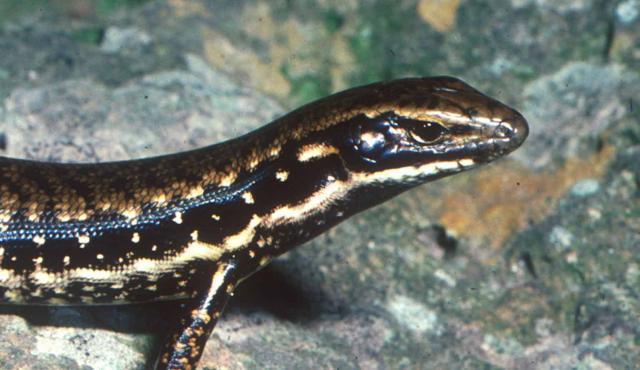

Corangamite Water Skink
Eulamprus tympanum marnieae
| Details | |
|---|---|
| Type | Reptile |
| Group | |
| Biology | Viviparous (live young). Produces 1 to 6 live young each year in late December. Litter mass and size increases with female size. Diurnally active, basking skink. |
| Distinctive Markings | Heavy irregular broken black stripe extending from the snout along the sides to the hind limbs. Limbs have heavy black stripes and blotches. |
| Taxonomy | |
|---|---|
| Phylum | Chordata |
| Class | Reptilia |
| Order | Squamata |
| Family | Scincidae |
| Genus | Eulamprus |
| Species | tympanum marnieae |
Source: Atlas of Living Australia
Discovered in 1963 near Lismore, Victoria. The only water skink to occur in the naturally treeless grasslands of south-eastern Australia. Restricted to Victoria.
| Interesting Facts | |
|---|---|
| Diet | Omnivore. Predominantly insectivorous feeding on both terrestrial prey including spiders, beetles and ants, and aquatic prey including mayfly and dragonfly larvae. Also feeds on the fruit of the Victorian Volcanic Plains Tree Violet (Melicytus sp.). |
| Habitat | Restricted to sites between Colac and Lake Bolac. Occurs in deeply fissured basaltic rock piles or remnant shrubs near permanent or ephemeral wetlands. |
| Native Status | Native to Australia |